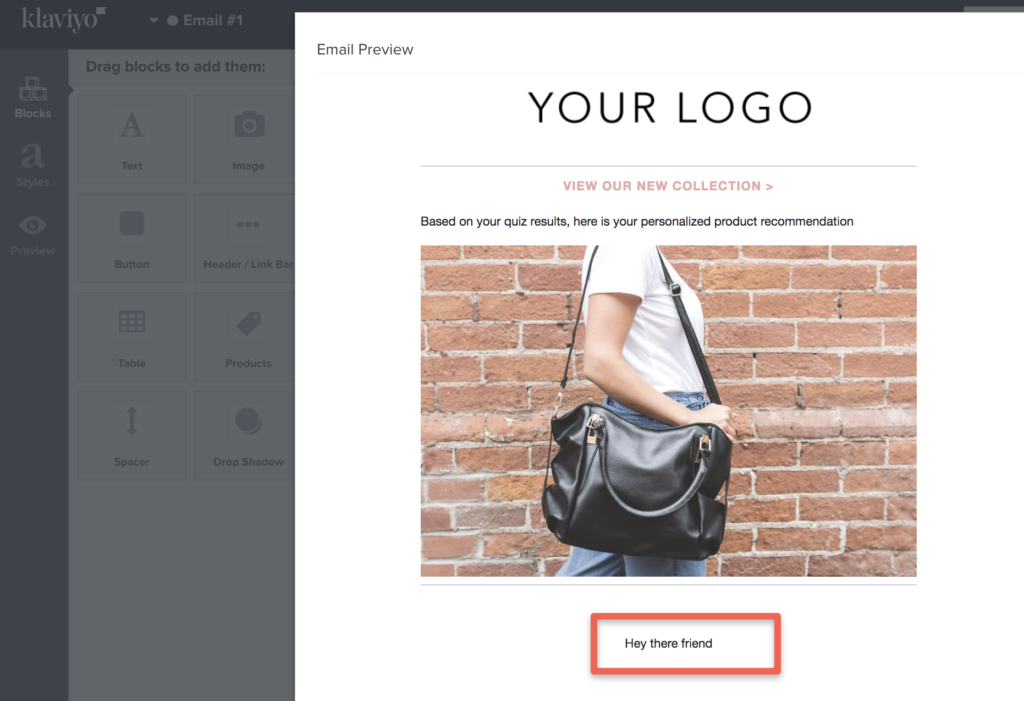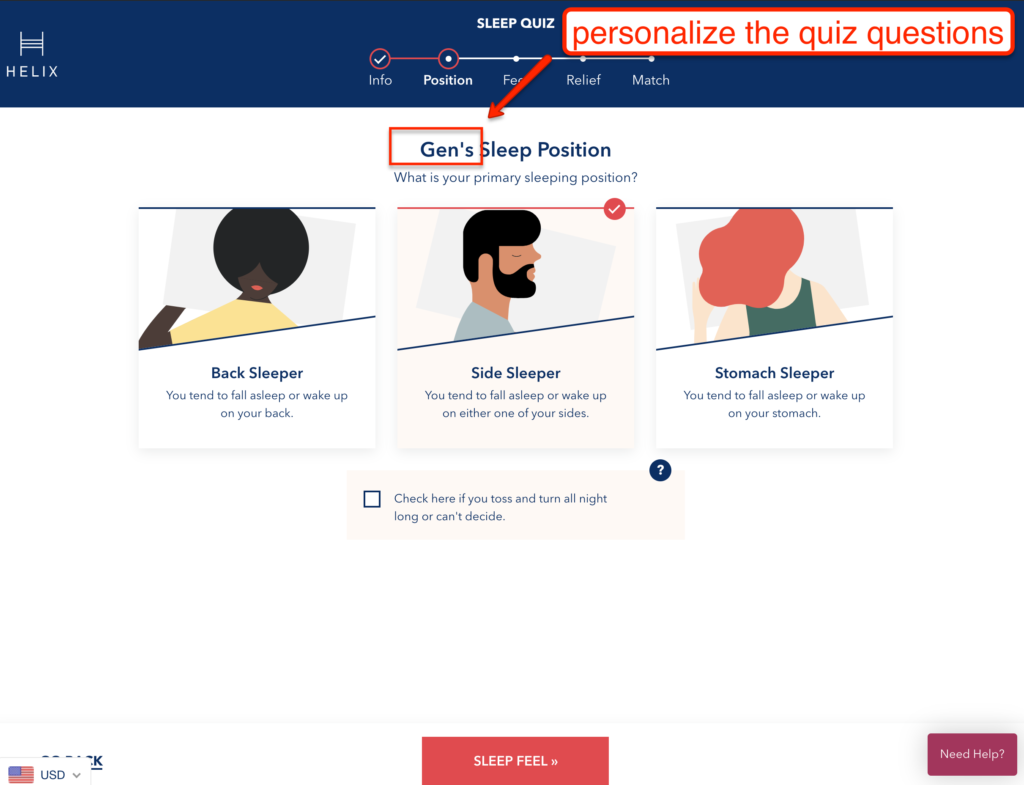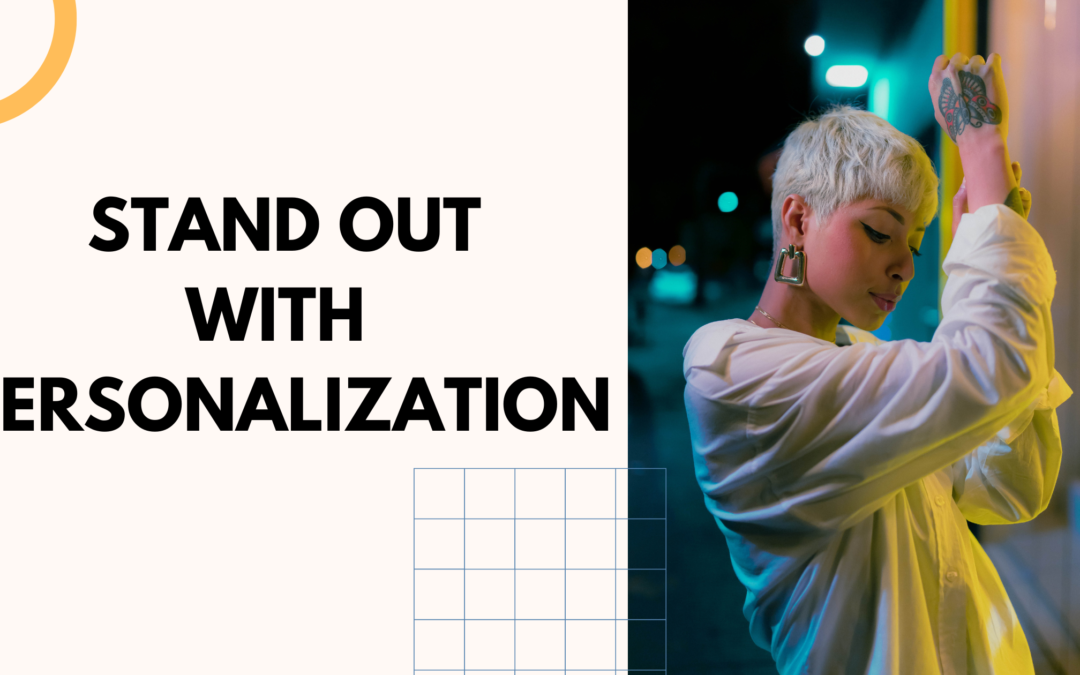Personalization is a huge untapped opportunity for ecommerce brands.
And there are real dollars at stake.
Customers want personalized experiences–and will support brands that can properly personalize.
Here are 3 easy ways to personalize your marketing right now.
The foundation of personalization is the customer data that you have gathered.
Without knowing anything about your customers, you don’t know what is relevant, and what will resonate with them.
Ultimately, your goal as a marketer is to:
- get the right offer
- in front of the right person
- at the right time
The most helpful customer data to build personalization campaigns around is Zero Party Data:
Salesforce defines Zero Party Data as, “”Zero-party data is that which a customer intentionally and proactively shares with a brand. It can include preference center data, purchase intentions, personal context, and how the individual wants the brand to recognize [them].”
Compare this to First Party Data, which is gathered passively from customers.
This can be transaction history (what they bought, how much they spent)
Site engagement (abandoned cart, product pages visited)
Marketing engagement (emails and SMS opened, clicked)
Because Zero party data is captures information directly from your customers, you can understand WHY they are on your site, and WHAT they want.
There are no assumptions necessary.
Because they have explicitly stated this to you.
Personalization Strategy #1: Include Their Name
The easiest way to personalize is to is use data that you have learned about your customer, for example, their name.
As you learn more about your customers, and it is stored in your Klaviyo profile properties, you start unlocking the magic of personalization.
Inserting properties in your emails in the easy first step:
To do this in Klaviyo, you can simply insert the custom properties directly into a Text Block, like this:

You will want to include a “default” placeholder if you have not captured their first name.
This would be written as the following in Klaviyo syntax: {{ first_name|default:’friend’ }}

Other ideas to insert Custom Properties:
- Attributes or preferences about the customer. For example, this could be their skin type, their wine preference, the breed of their dog, or any other info you know about them.
Personalization Strategy #2: Personalize The Website Experience
Another way to personalize the shopping experience is to tailor website experiences specifically for each individual.
This could be offering recommendations based on previous history (Amazon is an obvious example here, or tools like Nosto make this possible).
Once you capture the customer information, you can dynamically use that and personalize each page.
Here is an example from Function of Beauty, a haircare brand, that captures a first name and uses it on the website:
This is a feature called Recall, which you can use in Prehook in the exact way that Function of Beauty has done.
So
Learn more about how you can use Recall to personalize your website experience.
Personalization Strategy #3: Dynamic Product Recommendations
Once a customer shares Zero Party Data with you–their preferences, goals, interests–you have enough to recommend the most appropriate product for their needs.
A product recommendation quiz tool like Prehook can dynamically recommend the product.
Here’s an example from Helix Sleep’s custom-built quiz, and their mattress recommendation based on customer responses:

Once you know what their product recommendation is, you can build Klaviyo Flows specifically around that product, and include the product dynamically in the emails.
Here’s how you do that:
First, get the Event Variables linked to the Prehook Product Recommendation.
This will bring up the Preview Email window.
You can now see all of the Event Variables linked to Prehook Product Recommendation.
If you click any, for example “Image”, then Klaviyo will auto-populate the dynamic variable that you want to use:
This enables your emails to display the Product Image in the email dynamically. So whatever product was recommended, the associated product image will appear in the email.
Now add an Image Block to your email:
And paste in the Event Variable that you have copied for the Image:
Now Preview the email to make sure that the image shows up properly:
Which it does here:
Now you can build a whole Klaviyo Flow specifically around the product that was recommended to your customer, so they have a personalized experience that is more relevant to their stated needs.
Next Steps To Personalization
Now you have some basic ideas of how you can personalize your marketing, the next step is to gather customer data to build your personalization campaigns with.
Get started with a free 14 Day trial of Prehook to see how brands get a 5x ROI simply from running a product recommendation quiz!

